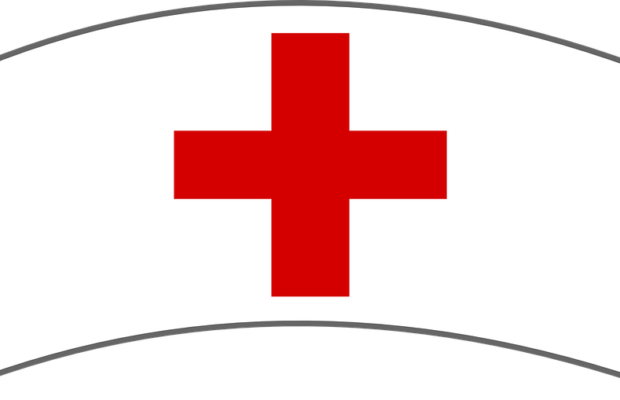When need arises, high school health team ready for action

When medical emergencies strike at the high school, there is a team of nurses and health officials ready to take them head on. Medical emergencies can happen at any time, and it takes a prepared and experienced group of individuals to keep students safe and healthy, both mentally and physically.
At the high school, there are three main health officials within the staff: Mischa Terry, Brianna Schenkenlburg and Cassidy Fritts. On a daily basis, these health officials deal with any injuries on the premises, help with any daily medications and support students when they are feeling ill mentally and physically.
Although, when an emergency happens, health officials must take a whole new approach to the situation. Fritts said the first step to a successful emergency response is “assess the environment in which [an] emergency is taking place and remove any potential safety risk. Assess whether our own safety is at risk in responding to the emergency. Identify who is in imminent danger and what the emergency is. Identify who else is present and any information they may have on the situation that may help me better respond.”
She said the next step is “stay calm. Determine level of consciousness, airway, breathing, circulation and assess for any injuries. Stay with the individual and administer First Aid/CPR, call for help and designate someone to call 911 if needed. Depending on the situation, it is also helpful to have another person take notes and note the time of occurrences.” And she said, “If the situation needs more support than what I can provide, I don’t hesitate to call for help. It’s important to know our capabilities and limitations going into a crisis situation, so that we may be able to identify when extra support is needed.”
Preparation before emergencies occur is as important as dealing with emergencies at the present. Fritts said, “I try to plan ahead as much as possible, so when the ‘unplanned’ occurs, I feel I have some control over the situation. At the start of each school year emergency protocols are reviewed and I make sure I am confident with my skills and trainings. Student health conditions and emergency action plans are reviewed as well. I also try to familiarize myself well with the school building, staff, wheelchairs and AED machines throughout the building and the emergency ‘Go Kit.’ The health office has a ‘Go Kit’ supplied with necessary items needed if called to another location. The AEDs throughout the building are maintained and tested on a regular basis. As a health office, the goal is to get to know your students and be aware of the health conditions and potential risks within your school.”
But all emergencies can’t be perfectly planned. Emergencies can be extremely difficult to assess and plan ahead for, like the recent crash on Division Street that happened last week during Power Hour at the high school. In fact, according to the U.S. Department Of Justice, 50 percent of students in schools are introduced to traumatic events from medical emergencies and physical bullying in United States schools. “The hardest part is the unpredictability of emergency situations. You can do everything ‘right’ and according to plan, but that doesn’t always determine how successful the outcome may be,” Fritts said.
But improvement and dedication to increasing the productivity of the health official staff is always in the works according to Fritts. After an emergency situation, she explained what actions are taken next. “[The first step after an emergency is] thorough documentation and allow time to debrief. Contemplate and discuss with [the] care team what worked well and what could be improved on. I feel following up with the individuals involved in the emergency situation is very important. Talking about the situation can be beneficial for those involved and also provides an opportunity to discuss process improvement for future situations. Take a breath and as much time as needed to regroup before returning to the job. We are best able to care for others when we take care of ourselves.”
So when an emergency strikes again like the crash on Division Street, students can have confidence that there is a team at the school who has their backs.









You must be logged in to post a comment Login